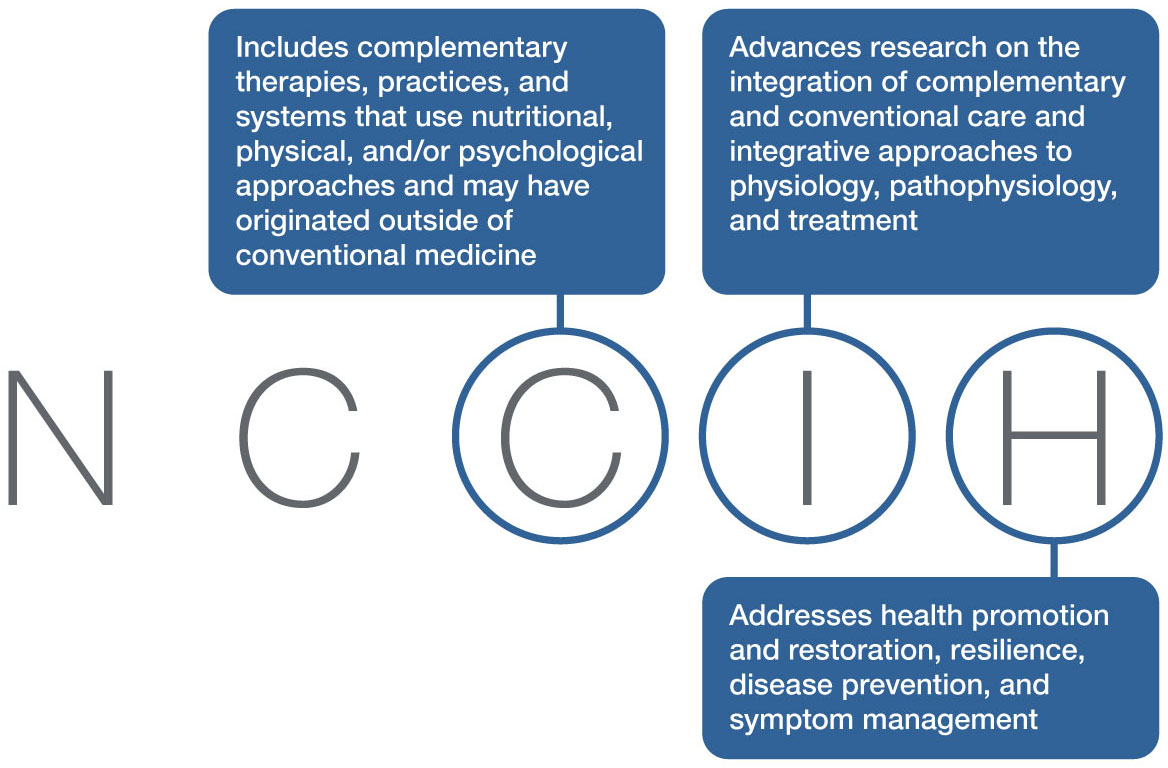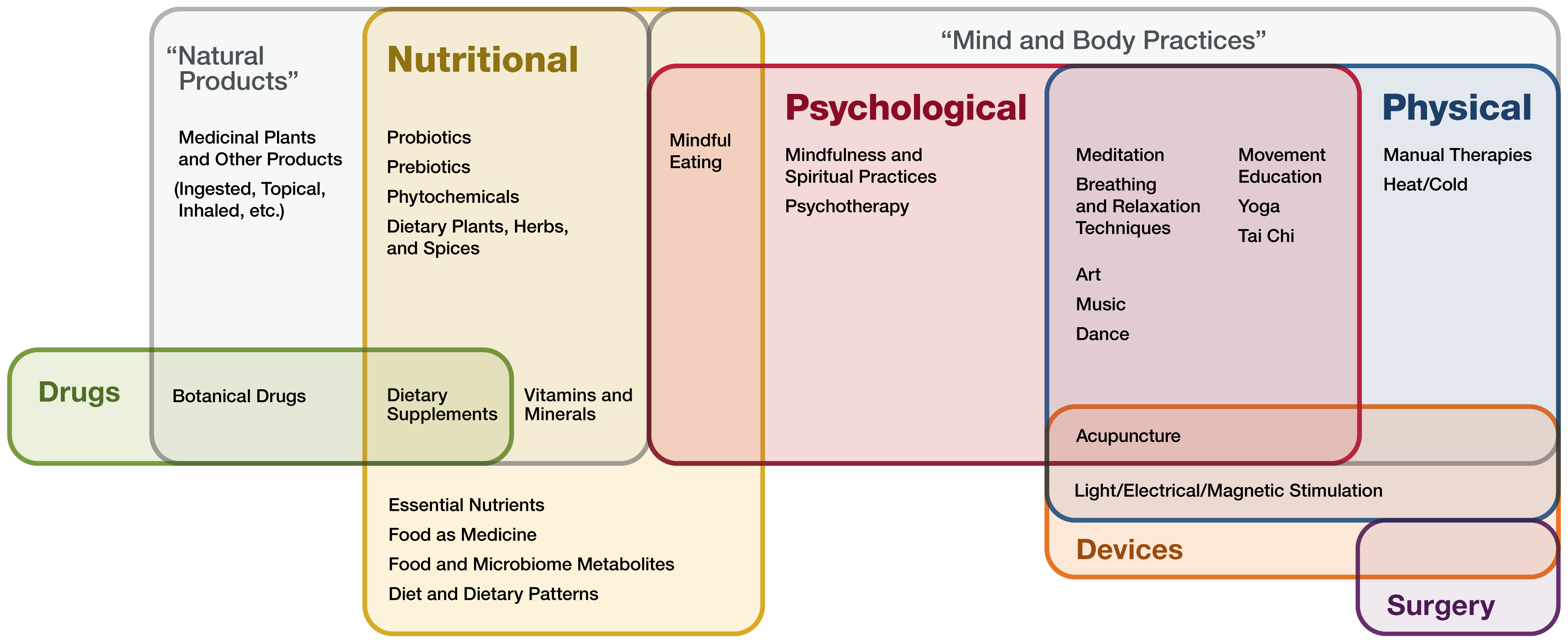Reframing How We Think About Natural Products and Mind and Body Practices
Until now, NCCIH has classified its extramural research portfolio into two areas–mind and body practices and natural products. However, the field of complementary and integrative health is expanding and the line between conventional and complementary approaches is blurring. Therefore, we propose that it is time to reframe the way we think about the research we support into new categories: nutritional, psychological, and physical.
To ensure continuity, the Center is not abandoning its mind and body practices and natural products terminology or research but is recategorizing the approaches that fall within our research mission based on their primary therapeutic input. This categorization illustrates where there are partially overlapping boundaries, including with pharmacologic drugs and devices. For example, a single natural product can be available as a food or food component, dietary supplement, or medication (e.g., niacin). Foods, probiotics, and dietary supplements, such as fish oil, are often used as part of a healthy diet and are also frequently recommended by practitioners. Mind and body practices, such as mindfulness-based stress reduction, can overlap with more conventional practices like psychotherapy. For example, cognitive behavioral therapy increasingly incorporates relaxation, meditation, and other modalities.
Many of the mind and body therapies, such as yoga, tai chi, and acupuncture, have both physical and psychological components. There is also an overlap between the psychological and nutritional categories in the form of mindful eating.
Looking at complementary therapies one by one is still important and necessary, but it is also important to think about how these therapies are used in combinations as multicomponent interventions.

Illustrative Examples of Therapeutic Input Framework

There are both conventional and complementary examples of multicomponent interventions. Conventional cardiac rehabilitation often includes nutritional recommendations, exercise, and a psychological component such as mindfulness-based stress reduction. Tai chi is also increasingly being incorporated into these programs. Although this example illustrates a holistic approach that recognizes interconnectedness of the psychological and physical components, the diagnostic and therapeutic framework under which these combined therapies are used is that of conventional medicine. In contrast, other types of multicomponent therapeutic interventions or systems bring together different modalities using diagnostic and/or therapeutic frameworks that are different from those of conventional medicine. For example, traditional Chinese medicine includes nutritional components like herbs and physical components like tai chi, soft tissue manipulation, and acupuncture. The difference between traditional Chinese medicine and conventional cardiac rehabilitation is that the framework that ties each intervention together in traditional Chinese medicine is distinct from those of conventional medicine. It is important to address this from a research perspective to gain more insight into whole person health.